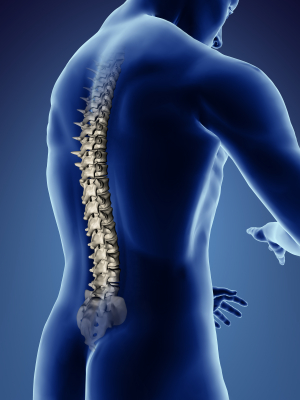
Dr. Cooper is one of the foremost neurosurgeons in the country for treatment of spinal disorders. Disorders of the spine include ruptured cervical and lumbar discs, cervical and lumbar spinal stenosis, spinal instability, tumors, infection, vascular malformations, trauma (fractures), scoliosis, and spondylolisthesis.
 Many of the operative procedures that deal with these entities are performed using minimally invasive (MIS) techniques with state-of-the-art monitoring systems and operative microscopes. These techniques decrease pain and hospitalization.
Many of the operative procedures that deal with these entities are performed using minimally invasive (MIS) techniques with state-of-the-art monitoring systems and operative microscopes. These techniques decrease pain and hospitalization.
Fusion procedures for instability utilize materials that enhance bony growth. The newest types of instrumentation, such as rods, screws, and bone or peek spacers, aid in the fusion of the spine. The use of advanced fluoroscopy has improved the accuracy of incisions and hardware placement. Some patients may qualify for artificial disc replacement in the cervical and lumbar spine in an attempt to preserve motion. . Each individual patient's surgery is tailored for the best and most long-lasting result.
Fusion may or may not involve use of supplemental hardware (instrumentation) such as plates, screws, and cages. This fusing of the bone graft with the bones of the spine will provide a permanent union between those bones. Once that occurs, the hardware is no longer needed, but most patients prefer to leave the hardware in place rather than go through another surgery to remove it.
Lumbar Stenosis and Disc Disease, Disc Herniation
Lumbar disc disease generally manifests itself in the lower back or lumbar region with associated pain radiating down one or both legs (sciatica). Additional symptoms of weakness, tingling or numbness, or difficulty with bowel and bladder control imply that the clinical situation is more significant then when pain is the only symptom. Neurological deficits such as these are usually associated with disc herniations that cause compression and compromise of nerve function and generally should be evaluated promptly.
A detailed neurological examination and a diagnostic evaluation consisting of MRI, CT scanning, flexion and extension films are obtained. Patients who are stable and without neurological deficits are initially managed without surgery using appropriate anti-inflammatory medications, analgesics, physical therapy and injections. In situations where the symptoms or clinical problems persist or progress, a microsurgical procedure can be performed to relieve the compression on the affected nerve or nerves. Depending on the complexity of the surgery, patients may be discharged the same day in an outpatient setting, or hospitalized for several days.
Those patients who are discharged several hours after surgery, can usually resume work activities, (depending on the work), within a few days. Heavy physical activity or strenuous sports are initially avoided..
Cervical Stenosis and Disc Disease
Cervial radiculopathies (Nerve Root Compression Syndrome) manifest themselves by shoulder and arm pain with or without neck pain. They are also frequently associated with symptoms of arm and hand numbness and weakness. The most common cause is degenerative spine disease (spondylosis). This can present itself in the form of a ruptured disc or an osteophytic spur.
Most of the symptoms generally resolve spontaneously in a few days or weeks with or without analgesics, anti-inflammatory medications or cervical traction. Further evaluation is indicated if there is increased pain, numbness or weakness.
A neurological examination and diagnostic studies are then performed to find the cause of the symptoms. Based on the findings, non-operative or operative intervention will be recommended. Most patients' symptoms, again, will generally resolve without operation. If non-operative measures fail, operative intervention is suggested.
Microsurgical procedures are performed on the cervical spine either by an anterior cervical approach with disc removal, fusion and plating, or a posterior decompressive foraminotomy (opening nerve canal) utilizing a small incision and microsurgical techniques. Both procedures generally have excellent outcomes.
Patients generally return to restricted activities in a few days following their surgical procedure.
Spinal Lumbar Procedures
Lumbar Laminectomy
Lumbar Fusions
Lumbar Microdiscectomy
Lumbar Artificial Disc Replacement
Spinal Cervical Procedures
Posterior Cervical Foraminotomy
Posterior Cervical Laminectomy
Posterior Cervical Fusion with Instrumentation
Anterior Cervical Discectomy
Anterior Cervical Discectomy and Fusion
Cervical Artificial Disc replacement